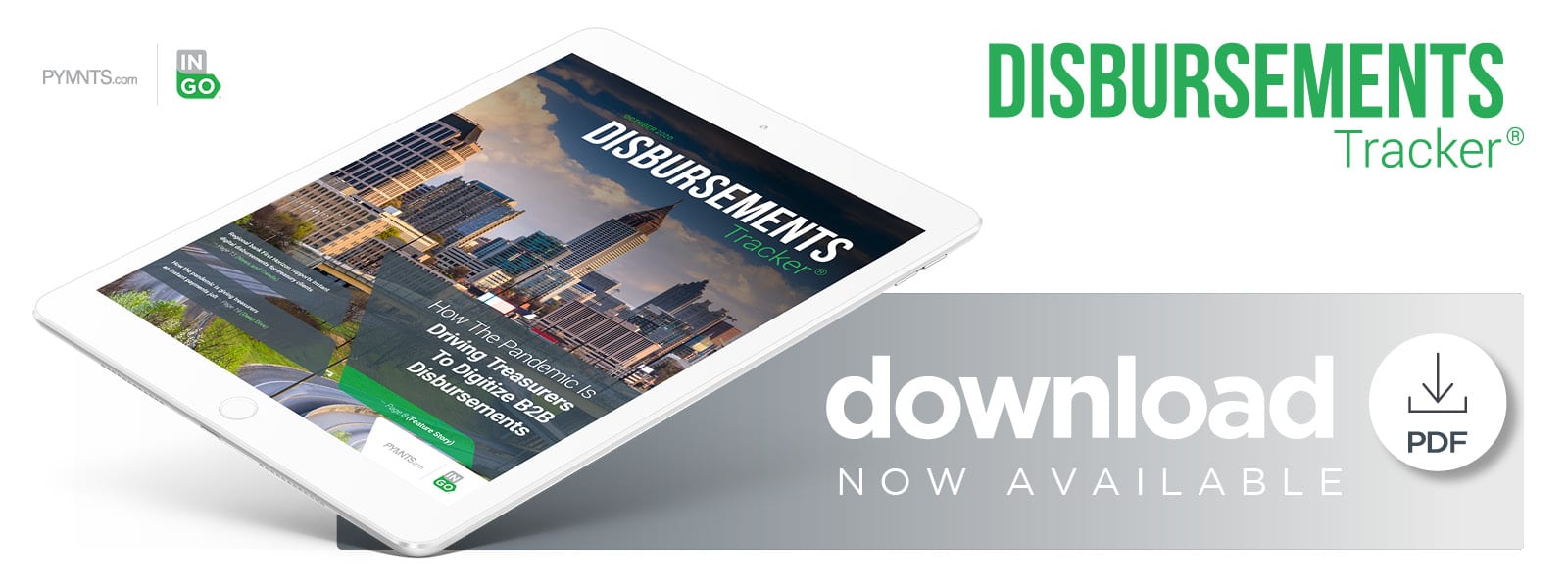How The Pandemic Is Driving Treasurers To Digitize B2B Disbursements

Businesses are more motivated than ever to keep tabs on cash flow — which is challenging when so many business payments are still made using paper checks. In the latest Disbursements Tracker, Bridgit Chayt, senior vice president and director of commercial payments at Fifth Third Bank, explains how cash flow pressures are accelerating the adoption of digital treasury and instant payment solutions.
Many businesses saw their financial standing turned upside down during the early months of the COVID-19 pandemic, as they adapted to changes in how they could interact with their customers, clients and employees. The shift to remote work by a large number of firms effectively rendered their old ways of managing B2B disbursements to partners or vendors obsolete.
Many of these firms had been using manual processes to finalize such transactions prior to the pandemic’s onset. The closures of brick-and-mortar offices, however, compelled them to seek out treasury solutions that were not paper-reliant so they could keep up with their clients’ changing needs, said Katrina King, executive vice president and treasury management sales manager for Cadence Bank.
“What we have seen [during] the pandemic is it has really forced more of our clients to move into that automation world while they are working from home, since they no longer have access to the information at their fingertips as if they were in the office,” King said in a recent interview with PYMNTS. “In order to help them … manage their financial position while working from home, they are looking for more web-enabled solutions.”
PYMNTS spoke with King as well as Bridgit Chayt, senior vice president and director of commercial payments and treasury management at Fifth Third Bank, to explore how business needs are changing — and what this means for the future of treasury management.
The Pandemic Paper Decline
Change has been traditionally slow to come to the B2B world, with many set in their ways when it comes to how they send out bills, disbursements and invoices, or how they accept payments from partners or vendors. Paper-based payments — not just paper checks, but also invoices or other documentation involved in B2B transactions — have become so ingrained that it took the pandemic to highlight how reliant many firms are on manual processes, Chayt explained.
“I think, for many of our customers, [treasury] was extremely manual, and that came to light as soon as [stay-at-home] orders started to be delivered globally,” she said. “All of that paper was being disbursed or just left in an office that was not occupied, so [those orders] pushed the paper envelope on paper-based distribution. It just halted.”
Businesses therefore made the jump to digital treasury solutions out of necessity — a significant shift for companies in certain industries. Healthcare firms are used to tapping online services for their payment needs due to existing regulations in that industry, King said, while those in the manufacturing industry are used to conducting payables or receivables in person and needed to work quickly to establish a digital presence.
“I think the COVID-19 pandemic has forced all of the … companies that had the luxury of an in-store presence and connection with their clients to rethink that to help replace the revenues,” King said. “A great example of that is being able to accept credit cards online versus just with a card swipe reader, or to electronically make payments with their trading partners in a more automated fashion than writing a paper check.”
Businesses are beginning to see the benefits of adding automation or other digital capabilities into B2B payment processes, including the use of real-time or instant payments to help further advance disbursement speeds. Interest in such methods has picked up during recent months, according to Chayt.
“We have seen a lot more interest in accelerating either pilots, proofs of concept or rollouts of real-time payments,” Chayt said. “But in addition, real-time visibility into cash, and real-time integration into banks and partners, [is] the real-time theme we are seeing, whether that is with APIs or open banking. That will continue to push the payments landscape into areas where we can take the pressure off of those long-standing payment rails, such as wire and check, and place more value on the information or messaging side that follows those.”
Although the growth of real-time payment adoption is encouraging, both Chayt and King agree that businesses are still not quite ready to let go of check payments completely.
Why Checks Continue to Cling
Some businesses might simply prefer paper checks for certain use cases or treasury functions, Chayt noted — but it may also be that companies have lingering questions about digital alternatives. Many firms remain wary over the fees attached to credit card payments or similar solutions, for example, while real-time payments receive a critical eye among businesses because mismanaged payments can disappear into a black hole. Real-time payments are difficult to claw back once they are sent, King explained.
“What worries me about real-time B2B payments is that once that money has been released, it is gone,” she said. “So I think corporates are going to have to be really diligent in ensuring that the payment instructions have been verified and not received by email, which might have been interrupted by a virus and altered … educating our clients is going to be key.”
Providing that education could go a long way toward prying clients away from checks or paper-based payments, a transition that is likely to become more of a necessity as the pandemic drags on and keeps workforces remote. Businesses are unlikely to fully return to pre-pandemic operational norms anytime soon, meaning that embracing digital solutions will be key.

